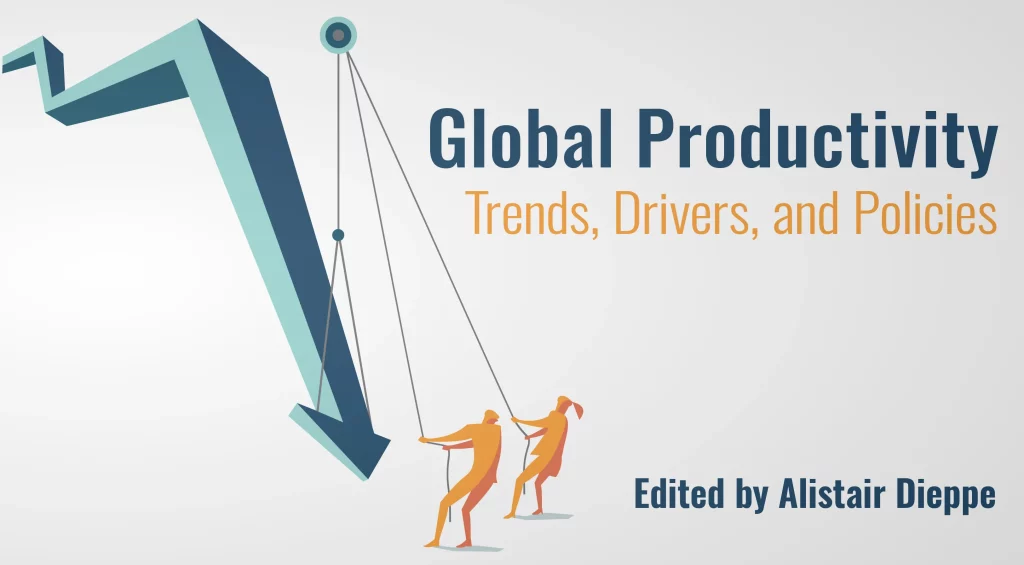Introduction: From Hype to Hard Numbers—AI Meets Economic Reality
Artificial intelligence has graduated from buzzword status to boardroom imperative. What was once relegated to niche academic labs and speculative venture capital decks has become the centerpiece of global corporate strategy and national economic policy. As of 2025, AI investment has reached historic highs, with trillions of dollars allocated across infrastructure, software, semiconductors, and workforce retraining. While much attention has focused on AI’s disruptive potential, a quieter and more profound debate is unfolding: how much will these investments actually move the needle on economic productivity?
For decades, economists have grappled with a paradox—technological innovations seem to abound, yet measured productivity growth in advanced economies has remained stubbornly low. Now, with the rapid adoption of AI, particularly generative and large language models, there is renewed hope—and some skepticism—that a productivity renaissance may be on the horizon. This article explores how AI investments are being integrated into GDP forecasts, where the productivity gains are materializing, and why some experts caution against market mispricing in the race to capitalize on this seismic shift.
The Scale of AI Investment: A Global Gold Rush
According to McKinsey and the OECD, global investment in AI exceeded $2.3 trillion in 2024 alone, with the United States, China, the European Union, and India leading the charge. These investments are not just in R&D but in widespread deployment—automating workflows, enhancing customer service, optimizing logistics, and revolutionizing software development.
Major tech firms like Microsoft, Alphabet, Meta, and Amazon have embedded AI into every layer of their business operations. Beyond Big Tech, adoption has permeated financial services (risk modeling, fraud detection), healthcare (drug discovery, diagnostics), retail (inventory forecasting, dynamic pricing), and manufacturing (predictive maintenance, quality control). In China, state-backed initiatives have integrated AI into public services, surveillance infrastructure, and smart manufacturing zones.
The significance of this investment wave lies in its breadth. Unlike prior tech waves that were sector-specific (think dot-com or mobile), AI’s appeal lies in its general-purpose utility. It’s not a tool for one industry—it’s a transformer of many.
Productivity Potential: Real or Theoretical?
Economic productivity—the output per unit of labor or capital—is the foundation of long-term GDP growth. AI, in theory, supercharges productivity by automating low-value tasks, augmenting skilled labor, and enabling new forms of innovation. But translating theory into measurable gains is more complicated.
In the U.S., nonfarm business productivity rose 2.7% in Q1 2025, a notable jump compared to the sluggish 1.4% average of the previous decade. Economists at Goldman Sachs attribute much of this acceleration to early AI integration in white-collar sectors like legal services, coding, and finance. The firm estimates that AI could raise annual productivity growth by 1.5 percentage points over the next decade, translating to an additional $7 trillion in GDP by 2035.
Yet critics urge caution. Robert Gordon of Northwestern University, a leading productivity skeptic, warns of over-extrapolation: “AI’s benefits are real, but like past technologies, the returns will be uneven and take years to diffuse fully.” He draws parallels to electricity and the internet, which had delayed but eventually dramatic impacts on productivity. The key difference now, Gordon argues, is that productivity gains may be offset by labor force disruptions and regulatory hurdles.

Where the Gains Are Emerging First
AI’s most immediate productivity effects are showing up in sectors where knowledge work is intensive and processes are highly repetitive. In software engineering, for example, GitHub Copilot and similar tools are allowing developers to increase output by 40–50%, according to internal studies from Microsoft and independent assessments from Stanford researchers. Legal firms report that document review times have halved thanks to AI-based contract analysis.
In healthcare, radiologists aided by AI can process and analyze images 30% faster, and early-stage diagnostic tools have reduced false negatives in cancer detection by up to 15%. In customer service, generative AI chatbots now handle more than 60% of first-level queries at major telecom and banking firms, freeing human agents for complex cases and reducing average resolution times.
Even in creative sectors, AI is driving efficiency. Advertising agencies are using generative tools for rapid prototyping of campaigns, reducing pre-production cycles by weeks. Hollywood studios are experimenting with AI for script generation, visual effects, and even voice synthesis.
These micro-level productivity improvements are beginning to aggregate into macroeconomic significance. However, they also present challenges: measurement lags, displaced labor, and a growing gap between companies that have embraced AI and those that lag behind.
The Challenge of Measurement and Mispricing
Despite visible gains, economists face a classic problem—many of AI’s benefits are hard to quantify in traditional GDP metrics. For instance, if a customer query is answered by a bot in one second rather than a human in five minutes, the productivity gain is real but may not be captured in output measures. Similarly, time saved by coders or lawyers using AI tools does not necessarily show up in GDP unless it leads to greater billable hours or output volumes.
This lag in measurement has implications for markets. Equity valuations of AI-adjacent firms have soared, with NVIDIA, AMD, and Palantir trading at aggressive multiples based on future productivity gains. However, analysts at Morgan Stanley caution that some of these gains may already be priced in, especially if adoption bottlenecks or regulatory interventions slow down the deployment pace.
Moreover, the AI arms race has triggered overcapacity in some areas—particularly data center construction and GPU production—which may create short-term capital misallocations. “We are seeing echoes of the dot-com era,” notes Peter Oppenheimer, chief global equity strategist at Goldman Sachs. “The winners will be extraordinary, but the journey will be messy.”
Labor Markets and the Human Productivity Factor
While AI is a capital enhancer, its impact on labor is more complex. On one hand, it augments worker capabilities—reducing drudgery, expanding reach, and enabling higher-value activities. On the other, it introduces automation risks, especially for roles involving routine cognitive tasks.
A study by MIT in early 2025 found that occupations like paralegal work, customer service, bookkeeping, and technical writing face the highest risk of disruption. However, jobs in creative direction, negotiation, and high-stakes decision-making remain resilient, at least for now.
This has triggered a race for reskilling. Governments in the EU and U.S. are pouring billions into AI literacy programs, hoping to bridge the skills gap before displacement becomes a social crisis. Some economists argue that the full productivity dividend of AI will only be realized if it is paired with human capital investments. Without them, AI may exacerbate inequality—producing islands of hyper-productivity in oceans of underutilized labor.
Expert Views: A Slow-Burning Boom or a Flash in the Pan?
Erik Brynjolfsson of Stanford University remains a prominent optimist. He calls AI the most important general-purpose technology since electricity. “The bottleneck is no longer the tool—it’s our ability to redesign workflows, retrain workers, and rewrite rules. If we do that, AI could lift living standards faster than any prior innovation.”
On the other side, Nouriel Roubini warns that productivity narratives are being hijacked to justify inflated asset prices. “Just because a technology is transformative doesn’t mean it delivers immediate returns,” he argues. “We must beware the assumption that investment automatically equals productivity—it’s about execution, governance, and policy support.”
In between, IMF researchers highlight regional disparities. Their 2025 report finds that countries with flexible labor markets, strong digital infrastructure, and open capital systems will extract more productivity from AI investments than those with rigid institutions. That means even if the technology is global, the benefits will be very unevenly distributed.
Investment Implications: Navigating the AI Productivity Wave
For investors, understanding how AI reshapes productivity is essential not just for stock selection but for macro positioning. Equity investors should favor companies with demonstrable AI deployment ROI rather than those simply branding themselves as “AI-powered.” Sectoral rotation into AI-leveraged industries—software, semiconductors, digital infrastructure—may continue, but valuations demand discipline.
In fixed income, productivity-led growth could delay monetary easing, especially in the U.S., where the Fed may tolerate higher neutral rates if GDP growth holds. AI-driven disinflation in services could paradoxically co-exist with wage pressure in non-automatable sectors, complicating the inflation narrative.
Private equity and venture capital are entering a consolidation phase, where capital is concentrating in firms with proprietary AI infrastructure or specialized domain knowledge. In emerging markets, AI productivity offers a potential leapfrog, but only if paired with digital inclusivity and sovereign investment in infrastructure.
Conclusion: The Productivity Puzzle May Finally Be Solvable—But Not Overnight
AI is undeniably powerful, and its economic potential is vast. But whether it rewrites productivity growth in the 2020s depends on more than algorithms and chips. It hinges on how quickly institutions adapt, how effectively labor is retrained, and how wisely capital is deployed. Productivity is not just a function of technology—it is the product of systems, incentives, and scale. In that sense, AI may be a spark—but the fire will take time to build.














































